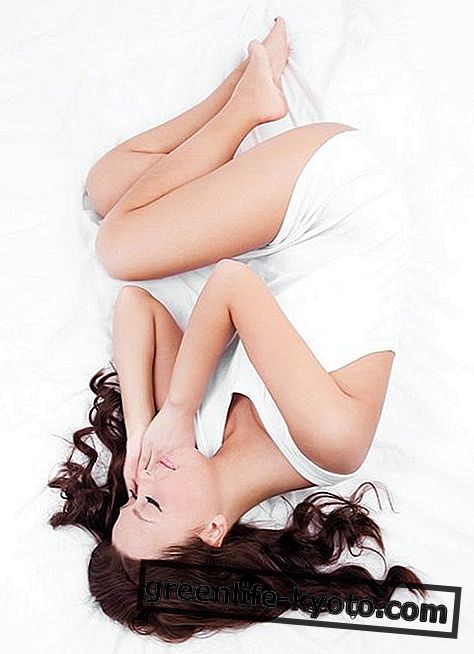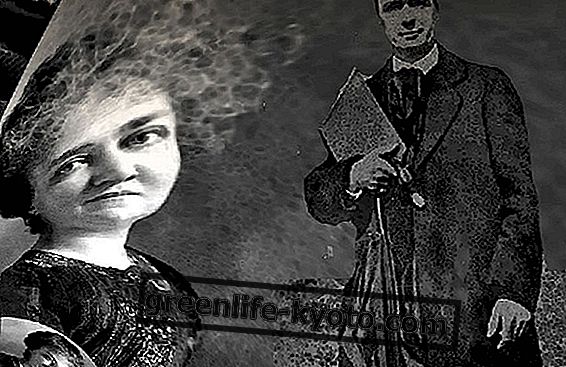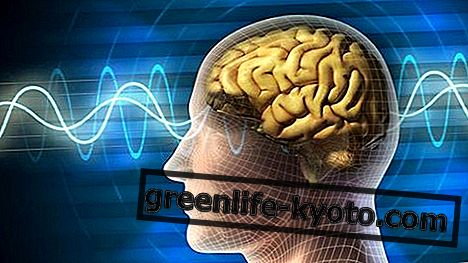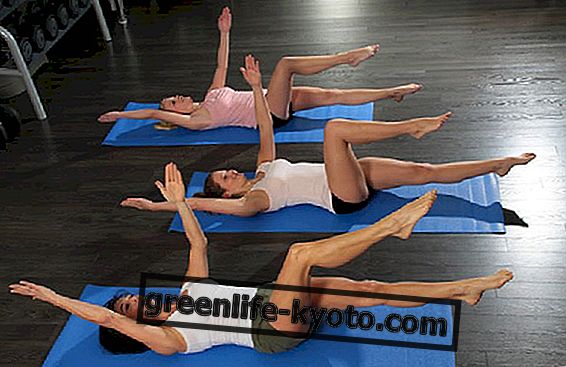During the phases of NonRem sleep, each person changes position several times for different reasons: to relax the legs, to breathe fluidly, to release tension in the back, but also to conform to his personality . We find out more about sleep positions and what they mean.

Sleep and movement
Sleeping on a comfortable bed, well insulated, that supports the body and accompanies it in its natural curvatures is the "must" to rest well.
It is not the advertising spot of a mattress company or at least not only, but it is the desirable condition to spend time dedicated to rest, little or so much.
During sleep the human body moves, turns and turns to find the best position compatible with the moment it is experiencing.
There are very dynamic subjects, perpetually in motion, except in the REM phases in which the musculature is almost paralyzed, and others that do not even crumple the sheets, apparently, but in reality make small movements at least twenty times, responding to the needs postural or dream situations in the NREM phase.
Beyond the dream-agitated sleep, the human body is often subjected to coping activity (term borrowed from clinical psychology) or a postural compensation, which adapts the body to unbalanced conditions, to search for the best attitude and to mitigate the consequences of erroneous positions.
Sleep shows that this correction also occurs unconsciously: in applied kinesiology it would seem that the body knows itself, never lies and corrects itself.
Learn more about how kinesiology corrects imbalances in the body

Conventional sleep positions
Six main positions taken during sleep have been identified:
- Fetal position - the subject is curled up on one side, the legs are bent and the knees tend to the chest. This is generally the most common position adopted in the slumber phase. It is the one that allows the body to contain body heat while waiting to warm up further with the refracting warmth of the blankets. In this position the back muscles stretch, especially the lumbar and sacral ones, removing them from the crushing of the force of gravity in an upright position. The legs are flexed and the adductor muscles are finally at rest, the back tensors are stretched, contributing to the stretching of the back . The effects given by this posture are of great physical relaxation and breathing, thus prompting sleep more quickly.
- Trunk position - The subject is lying on his side, legs and arms are stretched. It is a condition that maintains the natural cypho-lordotic curvatures of the back and that absolutely needs a good cervical support of the pillow. Usually it is a transitional position, because in the long run it shows discomforts, given by the weight of the muscles of one side over the other of the body, by the closure of the pelvis and by the legs huddled together.
- Semi - fetal position - it is a compromise position between the fetal and the trunk position. The subject is lying on his side, the back is slightly bent forward, thus softening the cervical and lumbar lordosis, the arms are bent and the legs are elongated as in the trunk position. In this condition the back muscles do not contract, thus benefiting the spine, the shoulders relax forward and the leg muscles are loose. Surely it is a comfortable posture for a protracted sleep, interchanged by the same on the opposite side.
- Supine position - also known as the Soldier's position, and the subject is lying on his back, his arms are at his sides and his legs are elongated and slightly apart. In this condition the force of gravity exerts its weight on the whole spine pushing it on the mattress and flattening the curvatures. It is always desirable to have a mattress that compensates for kyphotic thrusts and lordotic spaces, so as not to wake up with annoying back pains. This posture is of great benefit to the abdominal muscles and internal organs, since it is a position of great openness, of loosening of contractures, of self-massage with breathing, and unfortunately of noisy snoring for those suffering from this problem, to the detriment of the bedfellows.
- Prone position - classic position on the stomach, with folded cross arms, or around the pillow and lateral twist of the head . It is a position that is assumed mostly by the younger generations and manifests itself less and less with advancing age due to the physiological loss of muscle elasticity. In this condition the abdominal muscles and organs are heated. The musculature and the dorsal rachis derive particular benefit, since it contrasts the kyphotic curve, which during the day is always accentuated very often, above all in those who carry out sitting activities. Also the legs are lightened because it is an unusual posture that removes posterior tensions due to both the musculature and the venous circulation. On the other hand, however, the prone position is not a panacea for the cervical and lumbar fascia. Both are in fact subjected to an accentuation of the lordosis, with the aggravating circumstance of torsion to the neck which in the long run causes soreness of the part. Breathing is also compressed and for some at risk, this position can cause sleep apnea.
- Star position - the subject is supine, with the arms folded on the pillow over the head and the legs stretched and spread. Also this is a position of great opening, the rib cage is in maximum expansion thanks to the arms thus placed. The shoulders are well opened and the shoulder blades closed to counter the natural dorsal kyphosis. The general characteristics are the same as in the classic supine condition, with greater relaxation of the legs and pelvis. The arms in the long run on the other hand may suffer colds in the extremities and cramps, due to the position opposed to blood circulation.
Bed positions, Feng Shui advises
Sleep can be helped not only through the positions of the body, but also with the positions of the bed assigned to welcome the embrace of Morpheus. This is supported by Feng Shui, an ancient Taoist geomantic tradition that in the fifties was also supported by the geobiological research of the Hartmann brothers.
According to the indications of Feng Shui the position of the bed should foresee the orientation of the headboard to the North, or North-East, absolutely never to the South.
Facing the bed should not be placed reflective surfaces such as mirrors or dispersing openings such as doors and windows. In this way, sleep would be better protected, even favoring an increase in the Rem phase, which is fundamental for brain regeneration.
Greater precision in identifying the correct positions of the bed is given by the use of Hartmann's maps, which are able to locate the so-called nodes, or radiant points that can generate disorders called geopathies.
According to this theory there would be a network (2 meters per 2.5 meters pace) that covers the entire planet and radially leaves it. Crossroads are called Hartmann's Nodes or cancer points and prolonged parking on them could cause serious problems.













